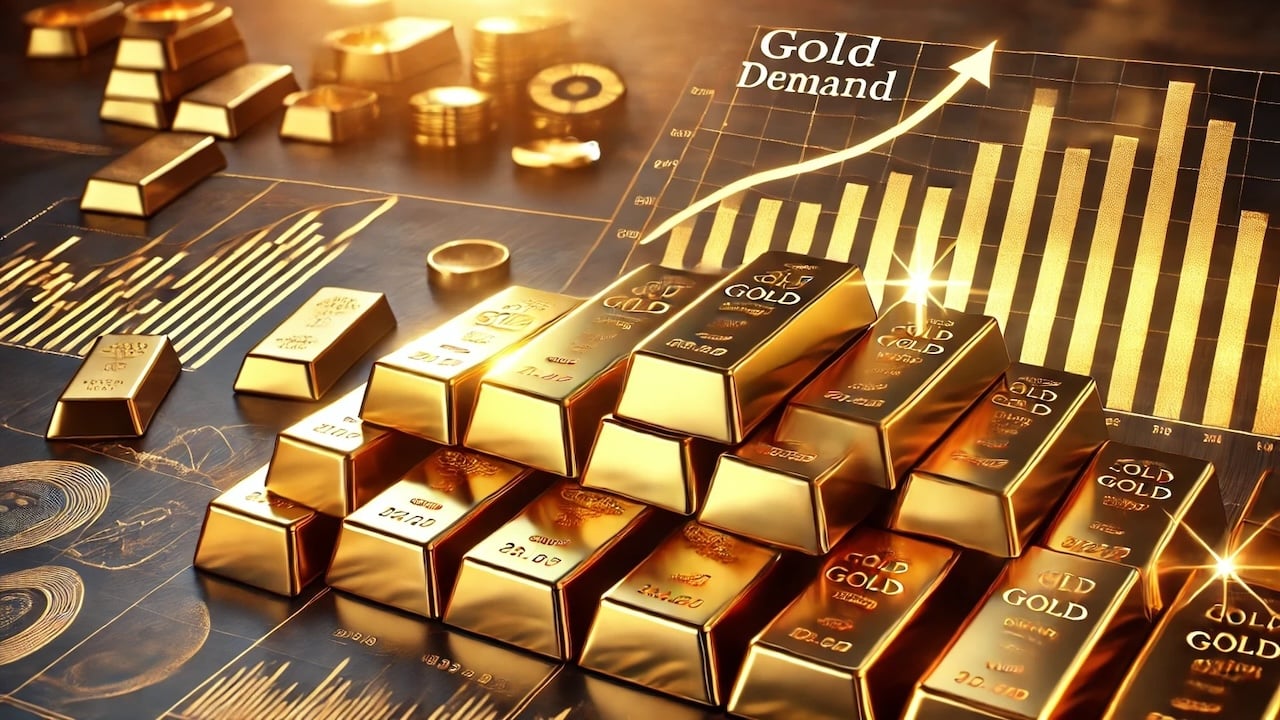(Mike Maharrey, Money Metals News Service) Gold demand was up 4 percent to 1,258 tons in the second quarter, the highest level on record since the World Gold Council started compiling data in 2000.
Demand for gold was strong in the second quarter despite record gold prices.
The LBMA gold price averaged a record of $2,338 per ounce in Q2. That was 18 percent higher year-on-year and 13 percent quarter-on-quarter.
Central bank and over-the-counter (OTC) buying offset a sharp drop in gold jewelry demand.
Central bank gold buying came in at 184 tons, up 6 percent year-on-year. This pushed total central bank gold purchases to 483 tons through the first half of the year, the highest H1 on record.
Based on the most recent World Gold Council survey, central banks’ appetite for gold won’t be sated any time soon.
Gold bar and coin demand was down about 5 percent year-on-year. A big drop in gold coin sales (38 percent) drove the overall softening of physical investment demand. Bar demand was up 12 percent. This likely reflects the fact that bars are the preferred gold product in Asia, where demand remains robust.
Investment demand data reflects a shift of gold from the West to the East. According to the World Gold Council, “Continued strong demand across Asia was offset by a sharp decline in net demand in Western markets, where profit-taking and liquidation has surged in recent quarters.”
The WGC went on to say, “Demand for bars, coins, and ETFs, was robust in the East, compared with a marked decline in the West.”
ETFs globally recorded modest outflows of 7 tons in Q2. Regionally, ETF gold demand reflected the same dichotomy as physical demand, with Asian funds adding gold and European and North American funds shedding metal.
Over-the-counter demand was particularly robust, estimated at 329 tons.
The World Gold Council explained the difference between OTC and exchange trading.
“OTC markets are characterized by market participants trading directly with each other. The two counterparties to trade bilaterally agree on a price and have obligations to settle the transaction (exchange of cash for gold) with each other. This form of principal-to-principal gold trading is typically less regulated than trading on an exchange and is how most of the market has functioned historically.”
Jewelry demand was soft in QT, dampened by high prices, dropping 19 percent year-on-year.
Gold used in technology was up a healthy 11 percent to 81 tons in the second quarter. The electronics sector drove growth, increasing by 14 percent year-on-year.
You can read the full World Gold Council Q2 demand report HERE.
Mike Maharrey is a journalist and market analyst for MoneyMetals.com with over a decade of experience in precious metals. He holds a BS in accounting from the University of Kentucky and a BA in journalism from the University of South Florida.

